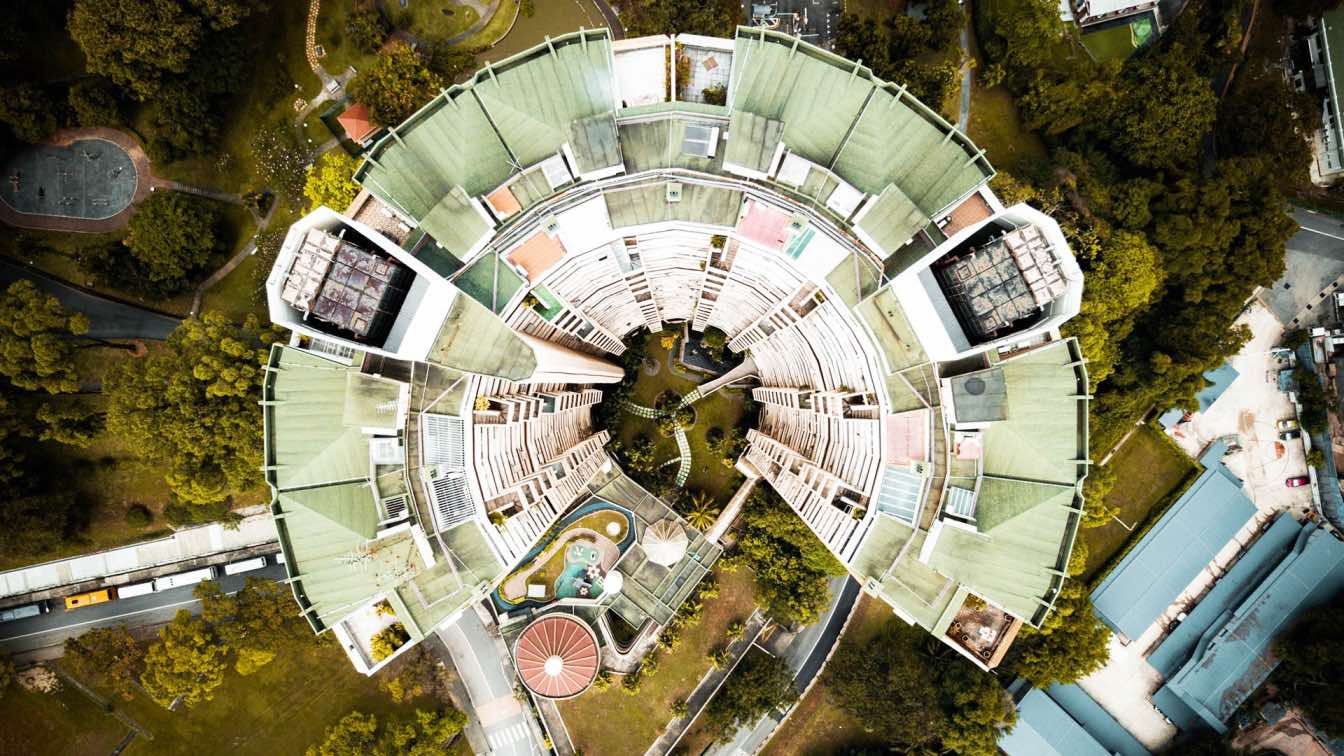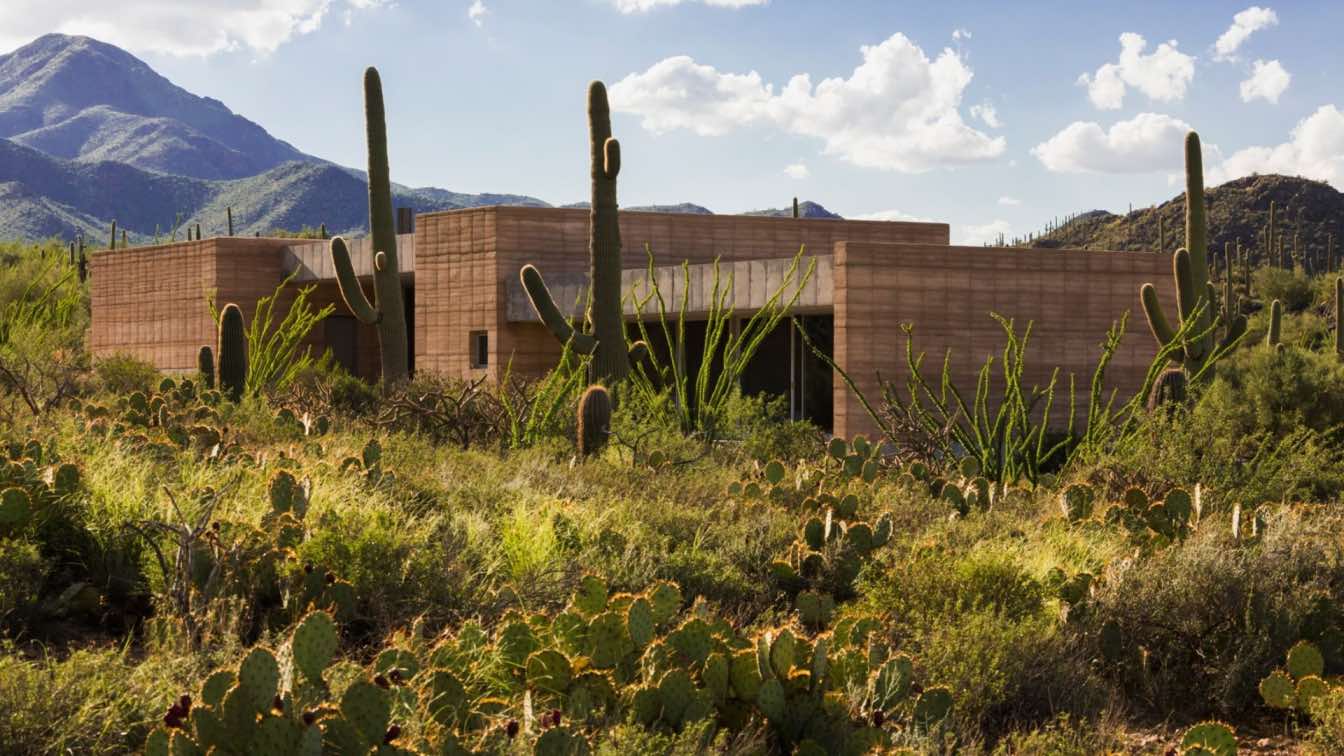1. What is Foodscaping?
Foodscaping can be defined in a number of ways. One way to think of it is the combination of multifunctional gardening or landscaping that is visually attractive and ornamental, but also supplies edible returns for the gardener. This often includes planning and growing a garden or outdoor space with a mix of blooming plants beside or integrated with aesthetically pleasing yet practical vegetables and other edible plants such as microgreens and herbs.
One of many examples is suggested by True Leaf Market, a national certified organic, non-GMO seed and horticultural company. The company’s in-house garden-lovers suggest ideas like combining sections in a garden alternating between Powderpuff Mix Aster Seeds and Butterhead Buttercrunch Lettuce Seeds. The lettuce’s bright green and textural foliage will give an eye-popping focal point aside its pink, red and purple aster garden-neighbors. The lettuce can be harvested for homemade salads, and the asters will remain pink and pretty.
For a “foodscaped” garden with swoon-worthy color that also packs a punch of flavor, try planting Bonanza Series French Marigold Seeds with Common Italian Oregano Seeds throughout intermittent beds and borders. The concepts are near-limitless, and the family can get in on the fun of designing, planting, cultivating, not to mention cooking and eating their harvests together.
2. What is an Edible Garden?
An edible garden is a traditional vegetable patch usually grown in the ground, raised beds, or other containers. This growing area usually has a designated location away from other landscaping, but is still close to the home. Unlike foodscapes, traditional edible gardens are planted in rows or square groupings using recommended plant spacing guidelines. While these gardens are beautiful, having a variety of shapes and colors developing from maturing vegetables or fruits, the focus of their design is centered on functionality. To make the most of your space, try planting with a guided seed-sowing template for square-space gardening. To handle small seeds, try using a dial seed sower when planting in rows.
To ramp up a productive edible garden, plant in succession, utilize garden cover crops, and pair companion plants together. Using these practices will help maintain soil nutrients from season to season. Growing edible crops in the same location each year can leave soils depleted unless protective measures are taken to replenish and prepare them for the coming growing seasons. Because of their single-harvest abilities, True Leaf Market recommends planting vegetables like beets, carrots, radishes, broccoli, and cauliflower in succession. Other vegetables like leafy greens are also ideal for succession planting if harvested all at once rather than as cut and come again.
3. What is the difference between a Foodscaped Garden and an Edible Garden?
An Edible Garden comprises both ornamental and practical growing, though every plant or its yield is edible. Foodscaped gardens can include grown plants and vegetation that are edible and non-edible, where the gardener’s primary goal is to plan and plant a creative mix of both. This can include combos like yummy red-leafed lettuce and blueberries, harmonized with nice-to-look-at State Fair Zinnias. Or, use your combinations for seasonal harvesting, pest prevention and rejuvenating the soil all at the same time. Pairing basil, garlic, onions, and potatoes with ornamentals like flower bulbs can help deter destructive pests while still producing a harvest. These plants produce aromas, natural chemicals, or poisonous foliage that keep animals like deer, rabbits, groundhogs, and voles away from your favorite ornamentals. For a low-growing fall groundcover and cover crop, grow daikon radish as a precursor to tomatoes the following season, aiding nematode suppression.
4. How did Foodscaping and Edible Gardens get their starts?
Edible gardens have played an important role in sustaining individuals and communities since people stopped relying solely on the gathering of food around 11000 BCE. Around this time, crop cultivation became popular because it allowed people to remain in one location and build stationary communities. About 2,000 BC ornamental landscaping began to emerge with the establishment of social classes and greater farm cultivation advances with irrigation systems. With food production being rooted in farming, those with more influence and money were able to develop gardens with design, symbolism, and ornamental focus. However, various natural and political events throughout history have created a need for foodscapes, also known as edible landscaping, to provide needed food for individuals and families.
Examples of edible and ornamental plants being used within the same growing space can be seen in the styles of English cottage and victory gardens, French Potagers (kitchen gardens), and Japanese healing medicinal gardens. Across the world, different cultures have created their own versions of foodscapes.
This term has modernly been used to describe the practice of working edible vegetables and herbs into the traditional North American landscape by utilizing fruit and leaf color, texture, size, and form.
5. When it comes to edible plants, what are some of the easiest for beginners?
These are typically garden vegetables and herbs such as onions, carrots, peppers, tomatoes, squash, zucchini, basil, mint, rosemary, and lavender etc. Other items like strawberries are also easy for novices or others with relatively limited experience in growing. Radishes are also a good starter for those wanting to stick their toes in the dirt but do not have a lot of free time, as they grow fast and the garden-to-table time commitment is short.
True Leaf Market recommends the six best seeds to start for new aspiring gardeners with their staff’s handy “Easy Seeds for Beginners” Guide. Using growing kits simplifies the process and often contains all of the supplies a new edible gardener needs to get started.
Two of our favorites are True Leaf Market’s Seed Starter Salad Kit and Seed Starter Culinary Herb Kit. There is also a Vegetable Growing Guide that breaks down the need-to-know insight whether it’s a foodie gardeners first time in the soil or they have been digging around in the dirt for years.
6. What are the most common mistakes people make when starting a garden?
Consumer gardening focus group data has suggested forgetting to water or overwatering are by far some of the most common "new gardener" mistakes. It is often difficult for new gardeners to know exactly when and when not to water, since plant watering needs vary so widely by species and region. An outdoor garden soil meter is a great tool as well as a standard rain gauge to help understand just how much water the plant has recently received or needs. Most gauges have an easy-to-read display showing what the ideal range is.
Watering your garden, whether for food or ornamentals, is more about maintaining the ideal moisture levels in the soil than it is about putting water directly on the plants. A plant will find water if it is available in the soil. As the soil dries from the surface down, plant roots grow deeper where there is still access to water. When a plant is no longer able to access water, it will start to show signs of wilting. For areas that are prone to hot and dry conditions, consider water-wise plants.
To best know how often you should add water to a particular area, see how long it takes before the plants start to wilt from the time you watered. Observe your plants each day. Then, set your watering schedule for that area to run for a day or two shorter than the length of your observation test. If using an irrigation system, it is best for your landscape to be divided into different zones, such as lawn, bedding, full sun, and shade areas.
The combination of soil texture, sunlight, and daily temperatures will affect how often watering is required. Generally, heat-loving vegetables have the greatest watering demands as they quickly put on new growth. Shade-tolerant vegetables will require less water and can often be grown early in the spring or late into the fall seasons.
7. How can someone look out for and treat pests?
Local county agriculture extension agencies are often a great resource for identifying pest or disease issues with outdoor edible gardens. Each state has a website for the local agency rife with advice, details and how-to information from degreed and licensed Horticulturists who specialize in the region.
True Leaf Market’s Ashleigh Smith says, “Planting companion plants can help safely deter pests and attract beneficial insects.” The concept involves selecting plants that naturally deter pests based on their aroma and natural chemicals or attract beneficial insects like lady beetles, bees, and praying mantes. While you don’t want to have a garden plagued with destructive pests, it is important to maintain a balance with those beneficial insects that promote a healthy garden.
Choosing plants that can aid each other is key to maintaining an organic garden without pesticides. In addition to companion planting, the use of cover crops can help disrupt pest life cycles that may carry on from season to season.
8. Where should consumers buy seed and what should they know about seed selection?
True Leaf Market is an excellent source for easy online ordering since the company is one of the largest e-commerce websites for organic and Non-GMO seeds with one of the largest varieties and choices. Many of the most common retailers even purchase their seeds from True Leaf Market. There are many possible options when planning or buying seeds for gardening or growing. True Leaf Market’s team of seed specialists suggest starting with three key need-to-know tips as follows.
Know your zone. The USDA has identified zones based on the average lowest temperatures an area experiences. This information can help you select plants that grow best in your location. In the case of growing an edible garden, knowing your first and last frost dates will help determine when to plant seeds and gather your harvest. Many plants grow best when started indoors, such as tomatoes, peppers, eggplant, and many flowers. In addition to seeds, seed starting trays and supplies may also be found at True Leaf Market.
Know your sunlight. Plants have different preferences for sunlight. While some thrive in full sun (6+ hours), others prefer the cool shade. Observing the growing area through an entire season can help you construct a sun map to continue planning for years to come.
Care for the soil. Utilizing organic growing practices can help restore soil quality lost over time. When growing edible plants, important nutrients are pulled from the soil and must be replaced each year maintaining access to macro and micro nutrients. Using organic growing practices can help build quality soil containing these.
Macro nutrients, like nitrogen, phosphorus, and potassium can easily be replenished with the organic practice of growing cover crops in the early spring, late summer, or fall months. Covering the exposed growing area with mulch can also help promote good soil health while reducing weeds.
9. Is it easy to prepare soil for seed gardening, and what is involved?
Adding "amendments" to garden soil is an absolute must in almost any region. Most backyards have been compacted and drained from nutrients over the years because of construction, building, and water runoff. Cleaning chemicals and pesticides often pollute a backyard, so adding something like compost, cow manure, peat moss, perlite (volcanic crushed stone), or vermiculite (spongy silicate material) can add new oxygen and minerals to compacted soil to revitalize and bring new life to old outdoor and backyard soils.
Another excellent favorite of mine is worm castings which adds back in new vital rich nutrients to the soil and promotes healthy microbe activity. True Leaf Market’s team is often asked how to simplify the process. In addition to worm castings, another option is to apply a perlite soil amendment as a means to improve soil drainage and water retention, giving the eventual seeds healthy conditions to kick-start cultivation and growth.
Determining the right potting soil is key when considering Edible Gardens in raised beds, pots, and other containers. Most plants require soil that is well-draining, moist, and contains the needed nutrients to support plant growth throughout the season. To accomplish this, it is important to balance organic matter, water retention, and nutrients. Organic amended coco coir is great for improving water retention. To improve soil drainage in wet soils, consider adding vermiculite to absorb some of the excess water to prevent root rot. Because containers tend to dry out faster than in ground gardens, True Leaf Market recommends using a max water retention soil mix in hot and dry climates.
10. How do you keep an Edible or Foodscaped garden from taking over a yard?
Simply put, raised garden beds or a modular garden bed are the top choices for maintaining a well-defined edible garden. It not only better defines the edible growing space and looks visually appealing, but it also helps any running/spreading or trailing plants not to creep out into the turf or yard as easily. This also allows for apartment dwellers or patio gardeners to have the same opportunities as families that have full backyards.
For those developing a foodscape garden, consider using small raised beds or containers for plants that can quickly spread and lose control. For example, it is best to grow plants like mint and strawberries in a confined area, or container, because they spread readily by the roots and runners. Plus, containers can add an aspect of dimension in the landscape.
Choose vegetable and other seed options that will suit the specific size and shape of the planned garden area. For small spaces and container growing, look for seeds recommended for containers in the description information. Some plants like tomatoes or pole beans may also require a support or trellis to grow on.
Plan ahead to include these structures in your garden, if needed. Using vertical supports is a great tool for training and monitoring plant growth throughout the season. Don’t be afraid to trim back overgrown plants or remove spent and old foliage. For example, deadheading old blooms often encourages more flower production and keeps the garden looking clean and neat.
11. Why do you think Edible Gardening and Foodscapes gardens are so popular right now? Are you finding that they are popular among only expert gardeners or also by hobbyists, families and first-time gardeners?
Gardening overall has grown in popularity over the last 5-10 years, both with homeowners to those renting even small spaces. While gardening can require work, it is also a very rewarding activity. Not only does it reward you with fruits, vegetables, and flowers to harvest, it can help as a mood booster and encourage movement.
Several scientific studies have found that observing and experiencing green spaces can help improve both mental and physical health, aid healing, and improve productivity. With the recent trends of more people working from home, being more health conscious, and wanting to know where their food comes from, the upward trends in gardening are no mystery.
When food shortages started happening a few years ago, people started growing their own. This has acted as a catalyst for the farm-to-table movement as people are making decisions to grow themselves, and support local farms, small businesses, and other first-time growers. As more people learn about how to grow different plants, foodscaping is growing in popularity.
While it is still most popular among those with extensive growing experience, it is making its way into the landscapes of those seeking to live a more organic, simple, and natural lifestyle. In addition to all of these benefits, foodscaping is just easy. To get started, all you need is soil, seeds, water, and sunlight. Anyone can do it.
12. When can you start a garden? Is it too late?
One of the best things about gardening is that it can happen all year long. This may sound funny if you live somewhere with cold winters, but it is the truth. Regardless of the climate or location, there is always something that can be grown indoors or out to produce a harvest.
Different plants mature at different times, allowing for a variety of edible plants to be grown. During the cool spring and fall months, plan on growing root vegetables, leafy greens, and herbs. Leafy greens and herbs are also great for growing indoors.
All you need is a small container, soil, and a well-lit window or a grow light. Many of these plants can also be grown as microgreens or sprouts, which are dense with nutrients and can be harvested in days to weeks. Regardless of where you live or your climate, you can enjoy the benefits of a fresh, home-grown harvest. It’s time to plan your edible or foodscaped garden.





